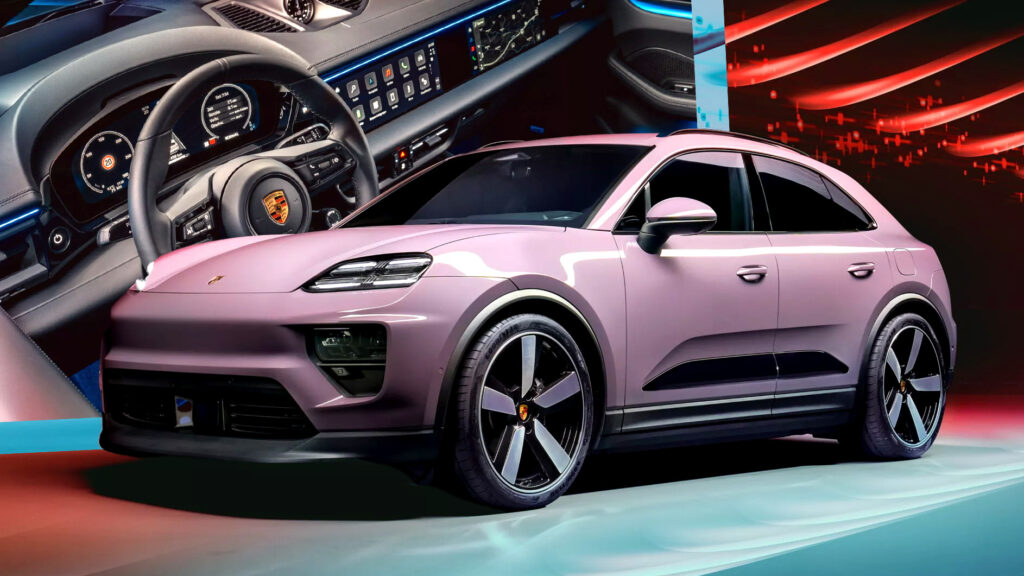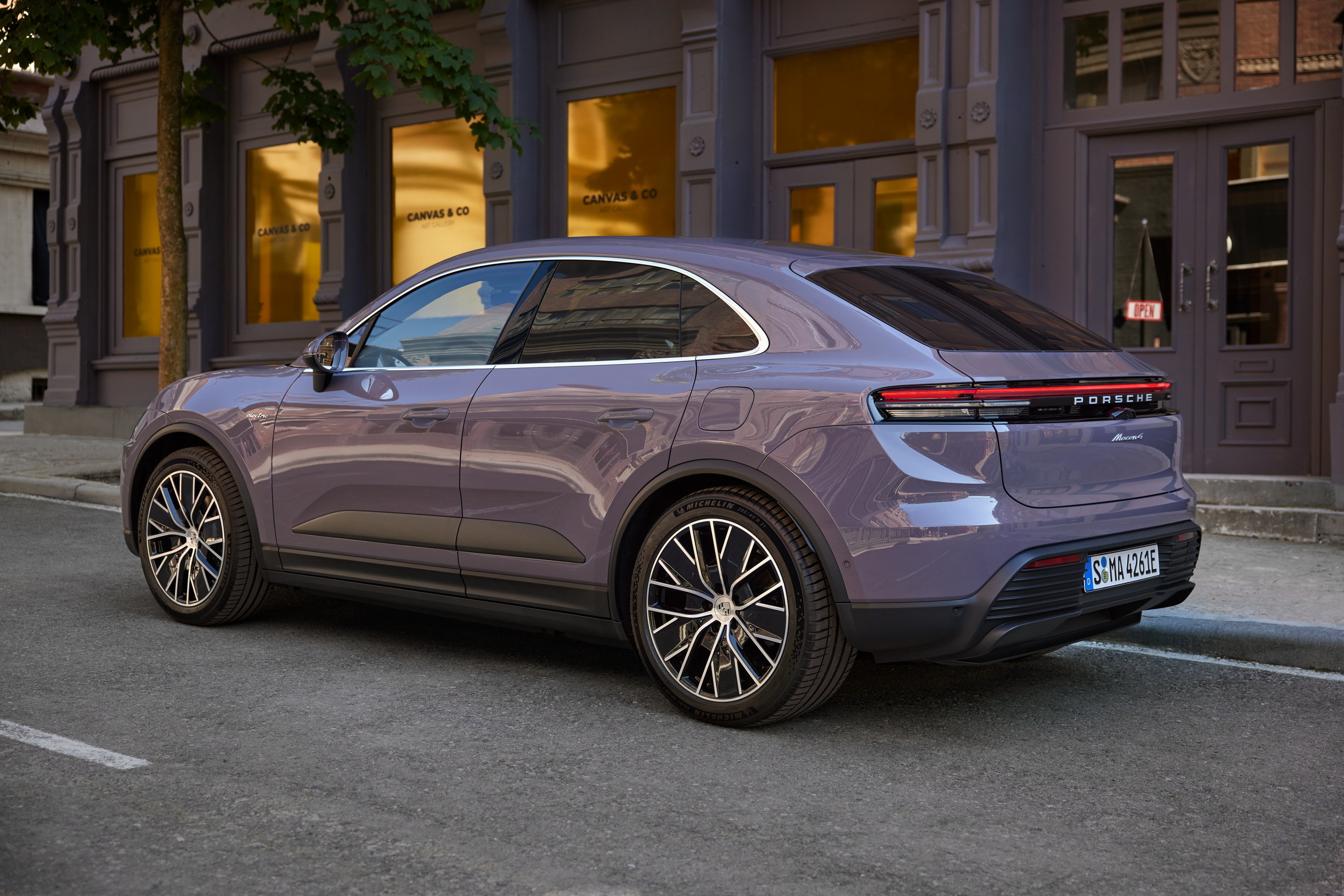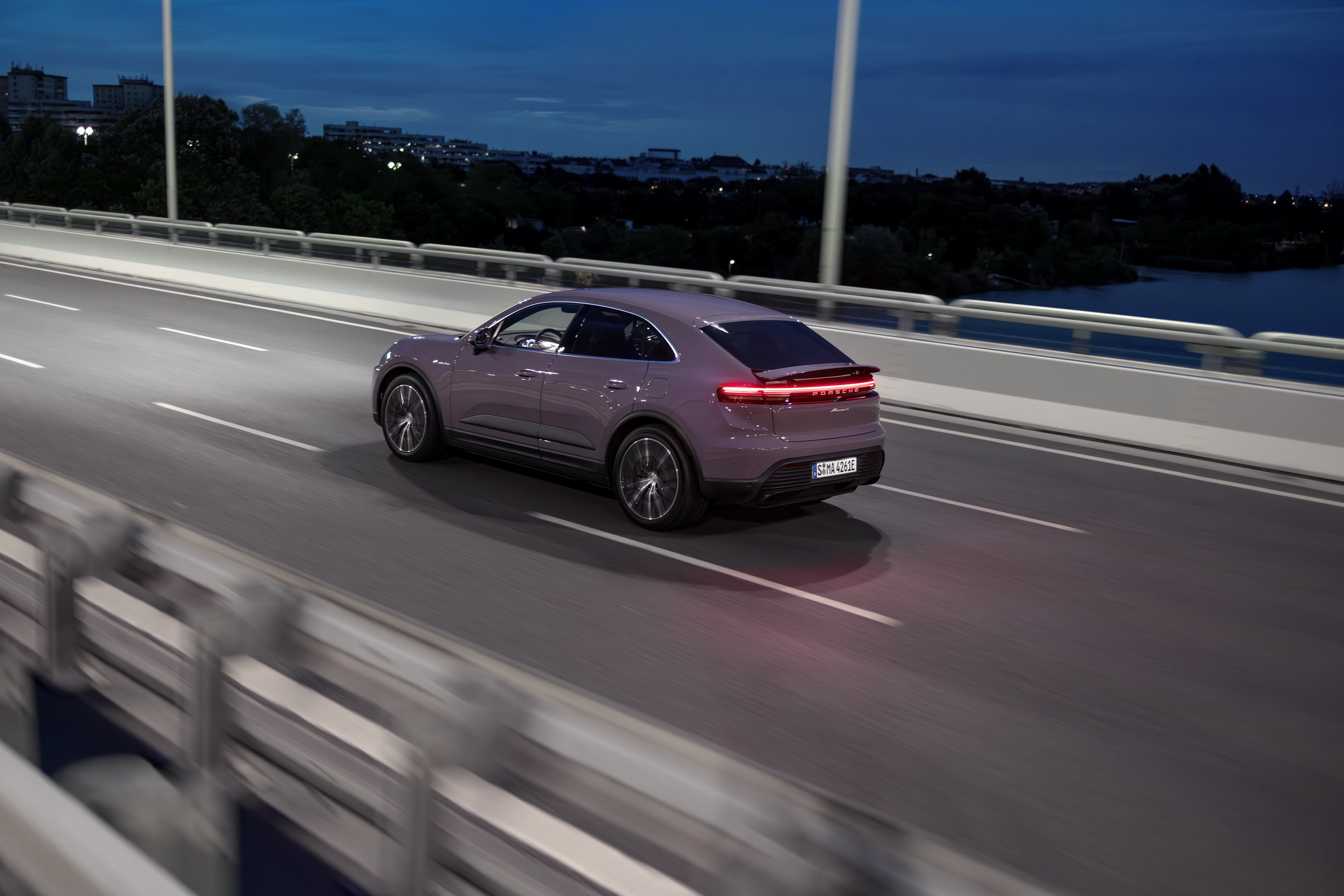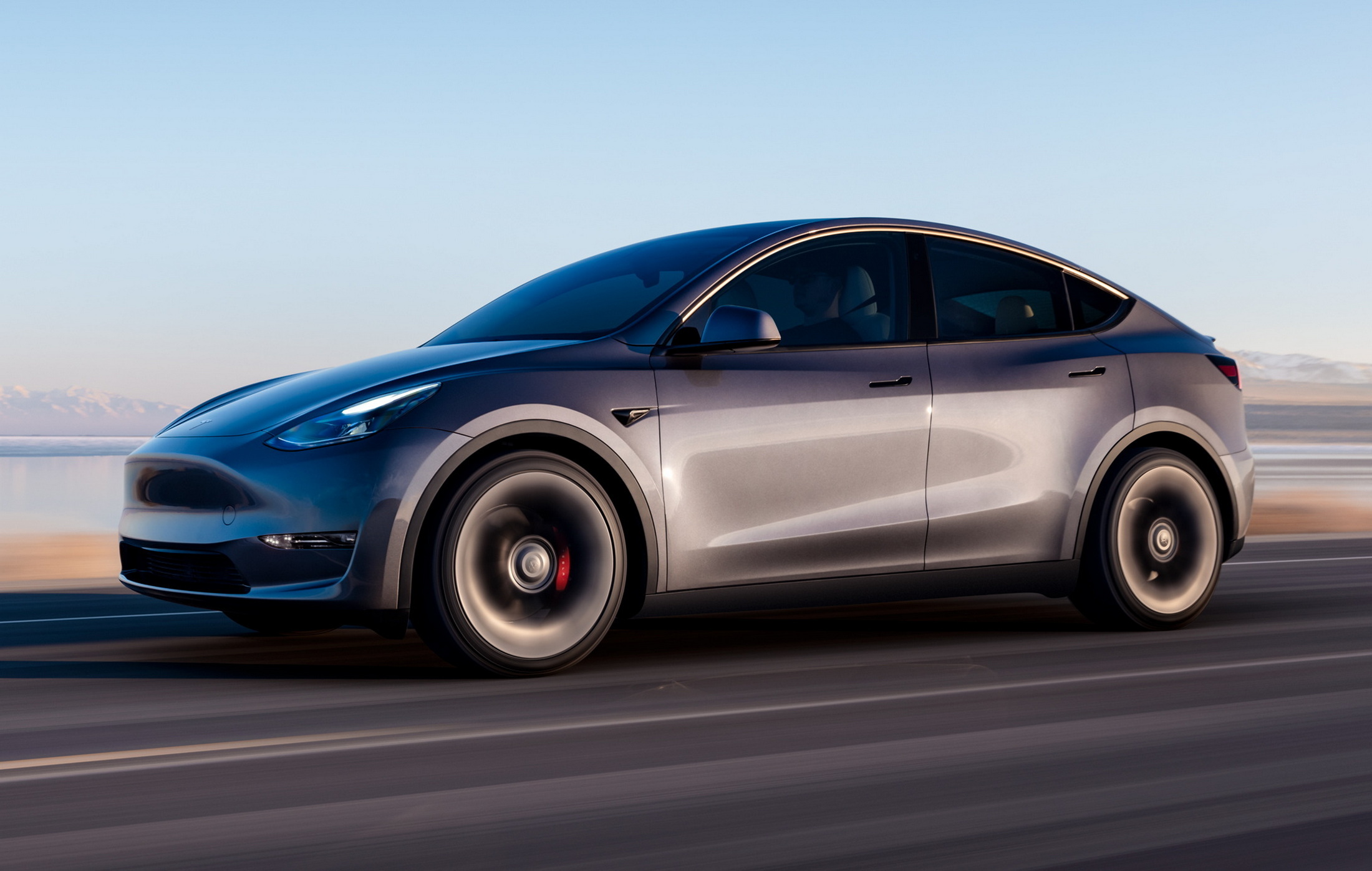The all-new 2024 Porsche Macan is here, and for the first time ever, it’s all-electric. Porsche has previously built other EVs, but this marks the first model series in its lineup to make the transition from internal combustion to battery electric.
As such, it’s coming to the market in the second half of the year with a number of unique features intended to make it just as much of a Porsche as the internal combustion Macan. Carscoops had a chance to get some insights from Porsche about what makes this car so important to the business.
From a design perspective, the new Macan EV does indeed look much like the rest of its family. Of course, it’s grown a little bit as it now sits atop Porsche’s Premium Platform Electric (PPE)) architecture, which it shares with the similarly sized Audi Q6 e-Tron. It’s now 188.4 inches long (4,786 mm) or 2.3 inches (58 mm) longer than the ICE Macan. It’s also 3 inches (76.2 mm) taller at 65.8 inches (167.1 cm) and a full 8.8 inches (224 mm) wider at 84.7 inches (215.1 cm).
It features a coupe-like sloped roofline, not unlike the Cayenne Coupe, that dips sharply toward the rear, and wide fenders that hide its EV underpinnings. “With the all-electric Macan, we are presenting the first Porsche that we are taking electric from an established product identity,” says Michael Mauer, Vice President of Style Porsche. “The new Macan is clearly recognizable by its brand identity as part of the Porsche product family.”
More: Here’s The 2026 Porsche Cayenne EV Hiding Under The New Macan EV
The larger footprint of the new Macan EV results in increased interior space. Rear passengers now enjoy more legroom, and every new Macan also offers an additional 4.4 cubic feet of storage compared to the ICE version. Out of this extra cargo space, 2.9 cubic feet are located under the hood in a second small compartment.
A New Electric Architecture
Every Macan EV comes with all-wheel drive thanks to an electric motor on each axle. They’re powered by a 100 kWh 800-volt battery pack that features an updated chemical mix and design compared to the Taycan. The integrated battery management system allows DC charging up to 270 kW. In real-world terms, should one find a charger that can output that kind of juice sustainably, it could increase the Macan EVs state of charge from 10 percent to 80 percent in just 21 minutes.
The battery management system can also treat the 800-volt battery as though it’s a pair of 400-volt batteries. According to Porsche, that should speed up charging times at 400-volt charging stations. Both the Macan 4 and the Macan Turbo are expected to feature range estimates north of 300 miles, with EPA figures to be released later this year. The battery can recharge at a maximum rate of 240 kW during braking events up to 0.5 gs. Interestingly, there is no one-pedal driving mode and the car will not come to a stop on its own at low speeds.
Tech Forward
Porsche is pushing its tech package inside of the Macan further than it has in previous cars. For example, it’s available with a trio of screens on the dash. There’s a 10.9-inch infotainment system in the center position, another identical 10.9-inch unit available in front of the front passenger, and completing the trio is a 12.6-inch driver information display.
The driver information display can also be equipped with augmented reality, although it’s a different type than what some other vehicles use. It displays directions in an that image appears to the driver at a distance of 32.8 feet and corresponds to the size of an 87-inch display. On top of that, expect both Android Auto and Apple CarPlay integration to end up as a part of the augmented reality display. Of course, for those who prefer a more traditional dash, the infotainment system features a minimalist mode.
Powertrain Options
Speed is something naturally associated with both Porsche and electric vehicles, and the Macan doesn’t buck that trend. It’ll come in two versions at launch, the Macan 4 and Macan Turbo, with more to be added down the line. The base Macan 4 makes 402 hp (300 kW) and 479 lb-ft (648 Nm) of torque and goes from 0-60 mph (06 km/h) in 4.9 seconds. It tops out at 136 mph (219 km/h). Both versions can effectively turn into a rear-wheel-drive crossover by sending all of the power to the rear tires only.
The Turbo is considerably more athletic though. It makes 630 hp (470 kW) and 833 lb-ft (1,128 Nm) of torque. That’s good for a top speed of 161 mph (259 km/h) and a 0-60 mph (96 km/h) time of just 3.1 seconds. That’s right, the new Macan Turbo is faster (off of the line) than a 911 GT3 that has 502 hp and does the same in 3.2 seconds.
Porsche incorporates a number of features to help it keep up in the bends too. Every Macan is equipped with a Porsche Torque Vectoring (PTV) rear differential. For Macan Turbo buyers, there’s an even more advanced version called PTV Plus, which is an even more advanced version of this technology that enables the rear motor to function as a locked differential. Additionally, both models offer four-wheel steering, allowing the rear tires to turn up to five degrees in either direction to enhance high-speed stability or low-speed cornering.
Furthermore, both the Macan 4 and Macan Turbo come standard with air ride suspension. Each corner features a two-valve system that allows for tuning of both compression and rebound. Speaking about the system, a Porsche spokesperson tells Carscoops “Obviously, yes, it’s a crossover. Yes, we understand that most people are only going to drive this to and from work or to school or whatever. But at the end of the day, it’s still wearing the Porsche badge. So it still needs to offer a Best in Class driving and handling experience.”
How Much Will It Cost?
The Macan 4 starts at $78,800, not including a $1,650 fee for destination and delivery. To put that into perspective, the current combustion-powered Macan, powered by a 261 hp (194 kW) 2.0-liter turbocharged four-cylinder engine, starts at $60,900 but is objectively not as quick or technologically advanced. It takes six seconds to go from 0-60 mph (96 km/h).
The Macan Turbo starts at $105,300, and once more, this price doesn’t include destination or delivery fees. It matches up closest to its ICE version with the Macan GTS, which features a 434 hp (323 kW) 2.9-liter turbocharged V6 engine that propels it from 0 to 60 mph in 4.3 seconds and is priced from $86,800.
Rivals And Availability
Porsche tells us that the only direct rival for Macan EV is Macan ICE which sounds cheeky, but take a quick look at the market and it’s not too far off. BMW offers the X3, Mercedes has the GLC, and Genesis offers the GV70, but none of those three really match Porsche in terms of performance and they’re not solely electric. Do some offer more practicality or value per dollar? Sure, but nobody needs a Porsche either.
Electric rivals could come in the form of the upcoming BMW iX3 or perhaps the Tesla Model Y Performance. Audi’s Q6 e-tron which shares plenty of components with the Macan EV is coming soon too and will likely do so at a bit of a discount compared to the Porsche. It’s plausible that buyers could even cross-shop the larger BMW iX and the Mercedes EQE SUV as well. Neither though will likely offer the same driving dynamics.
Porsche said it will begin to take orders immediately with deliveries expected to commence in the summer of 2024. However, it’s worth noting that Porsche told Carscoops that production capacity for the 2024 model year may not be sufficient to meet demand, although they didn’t specify the exact number. They did mention that production for 2025 is expected to be considerably higher.













































































































































































